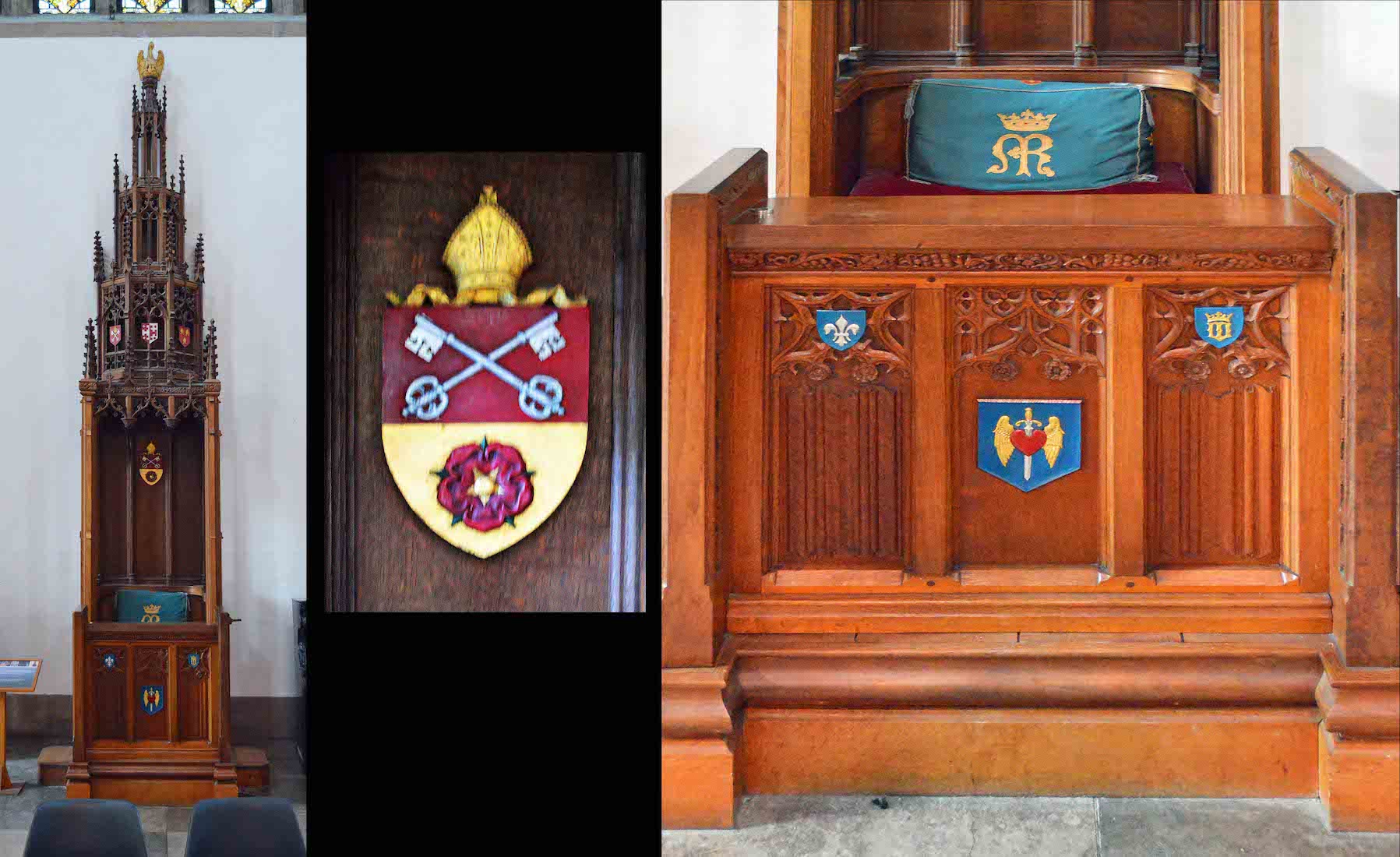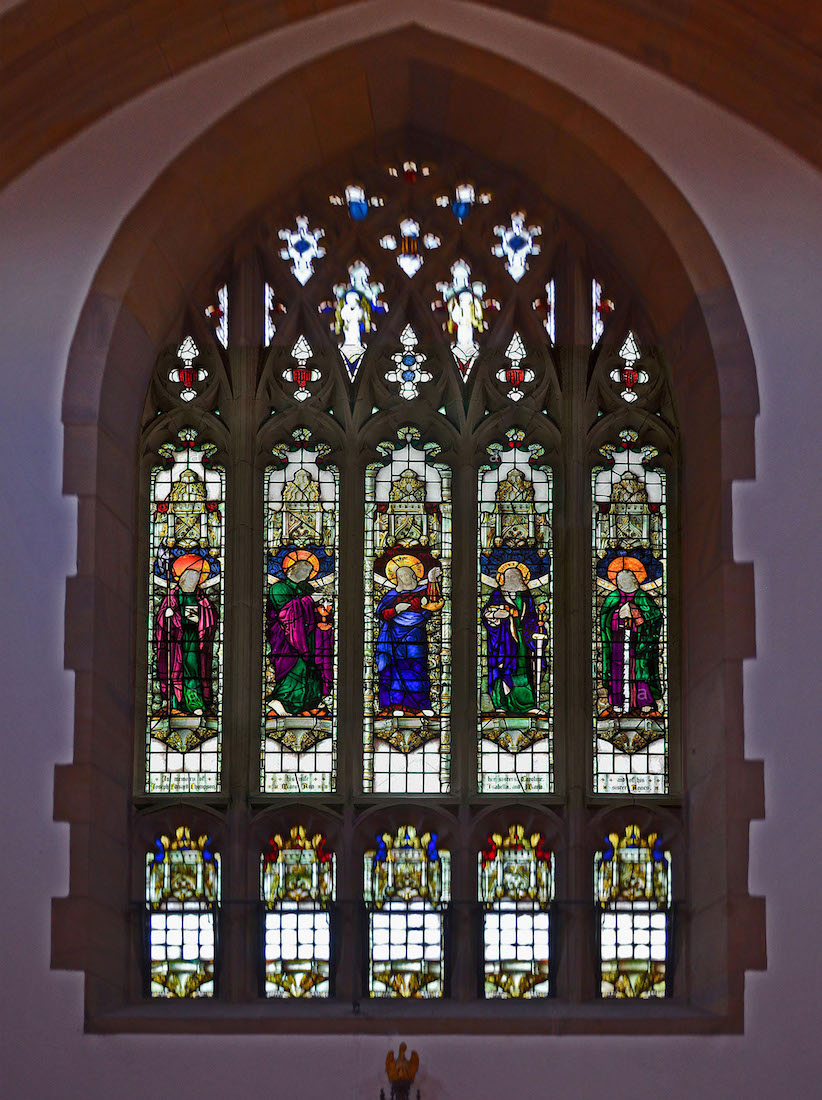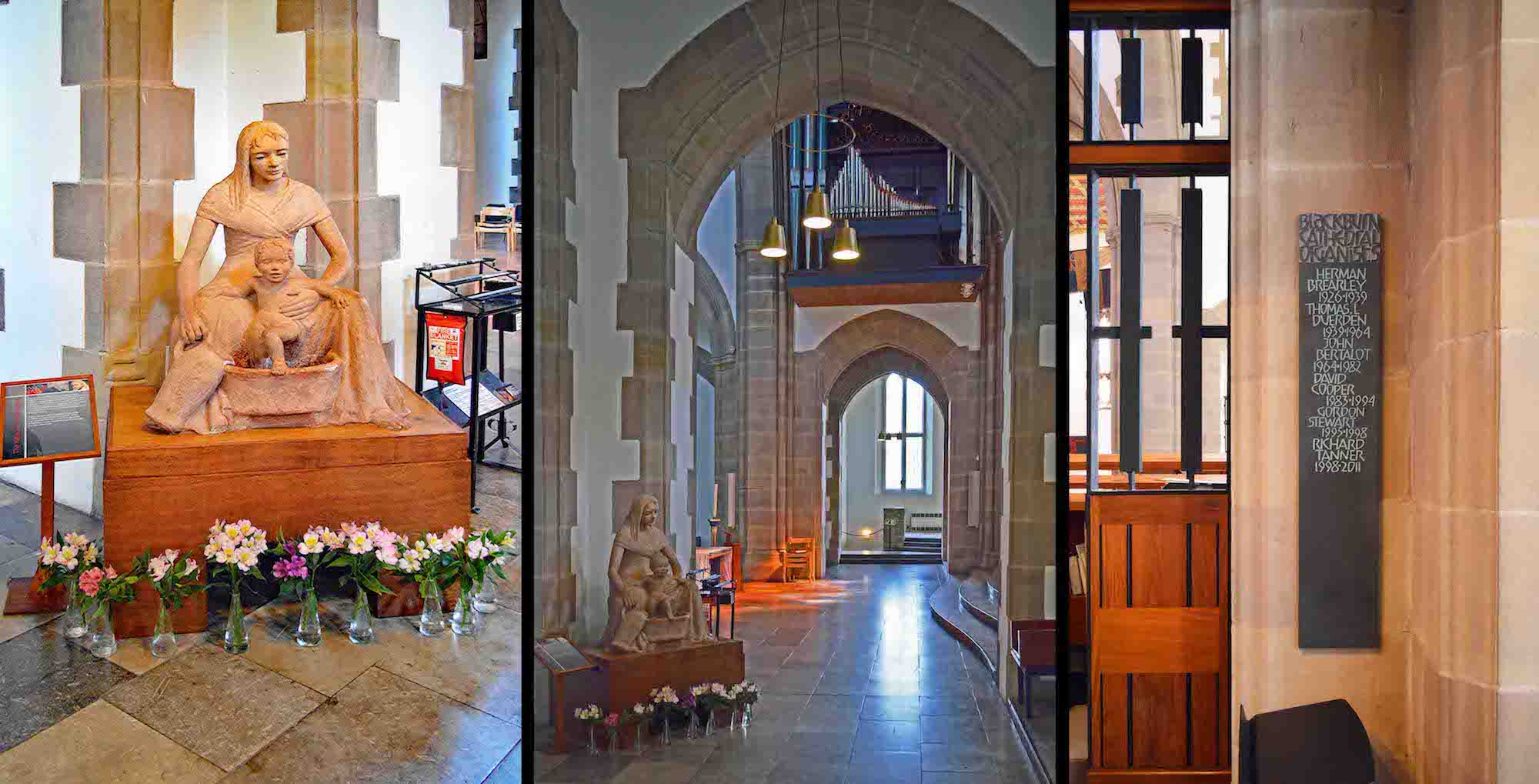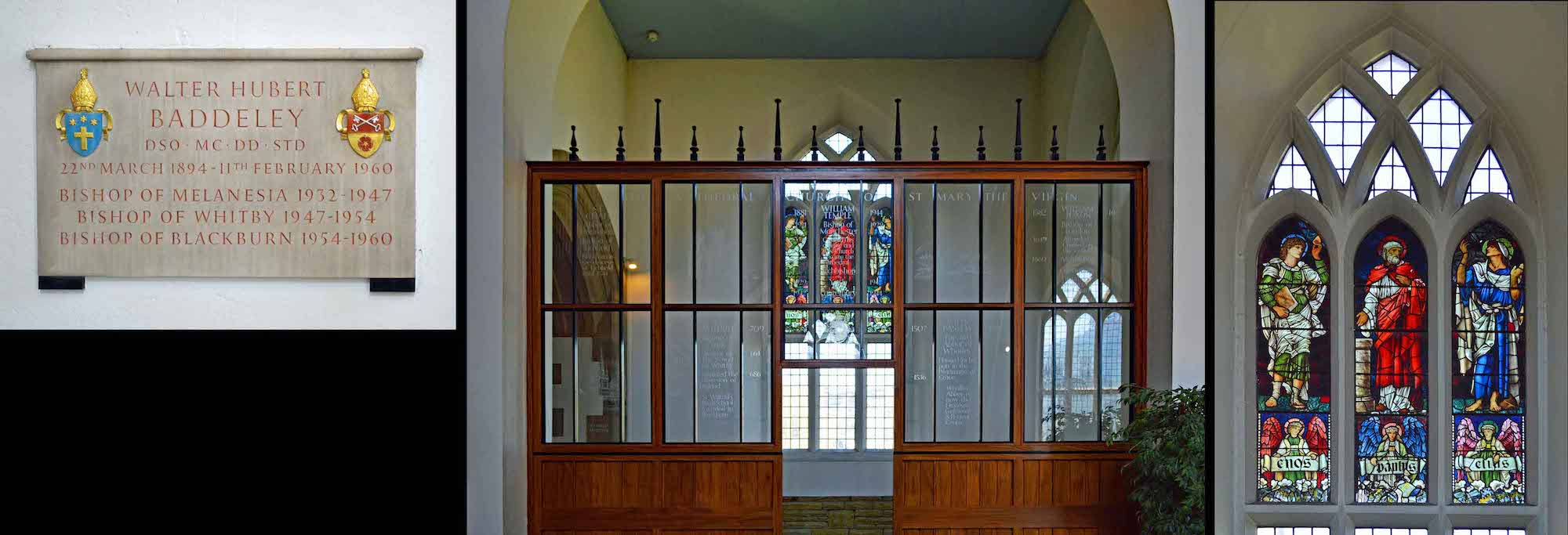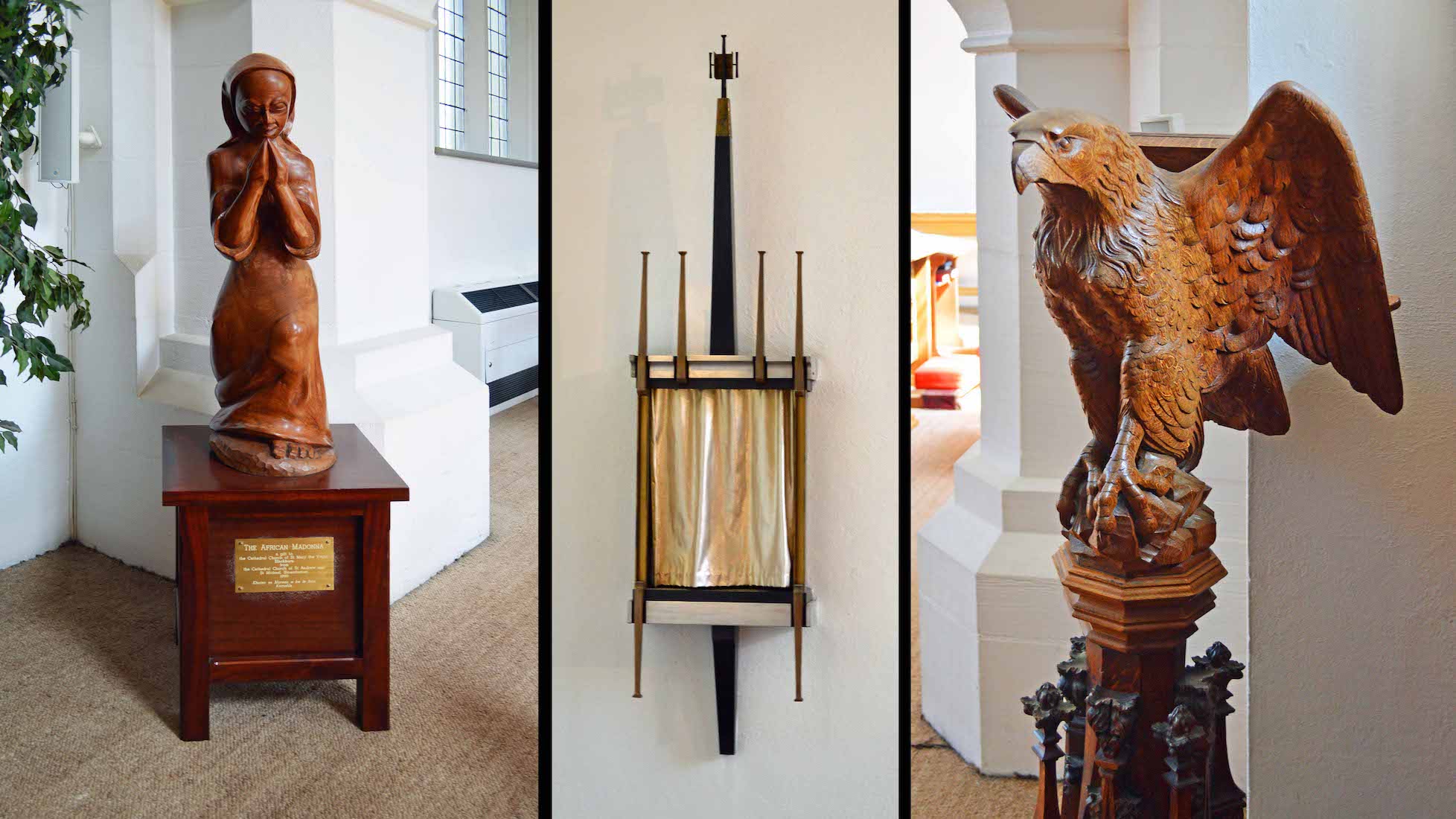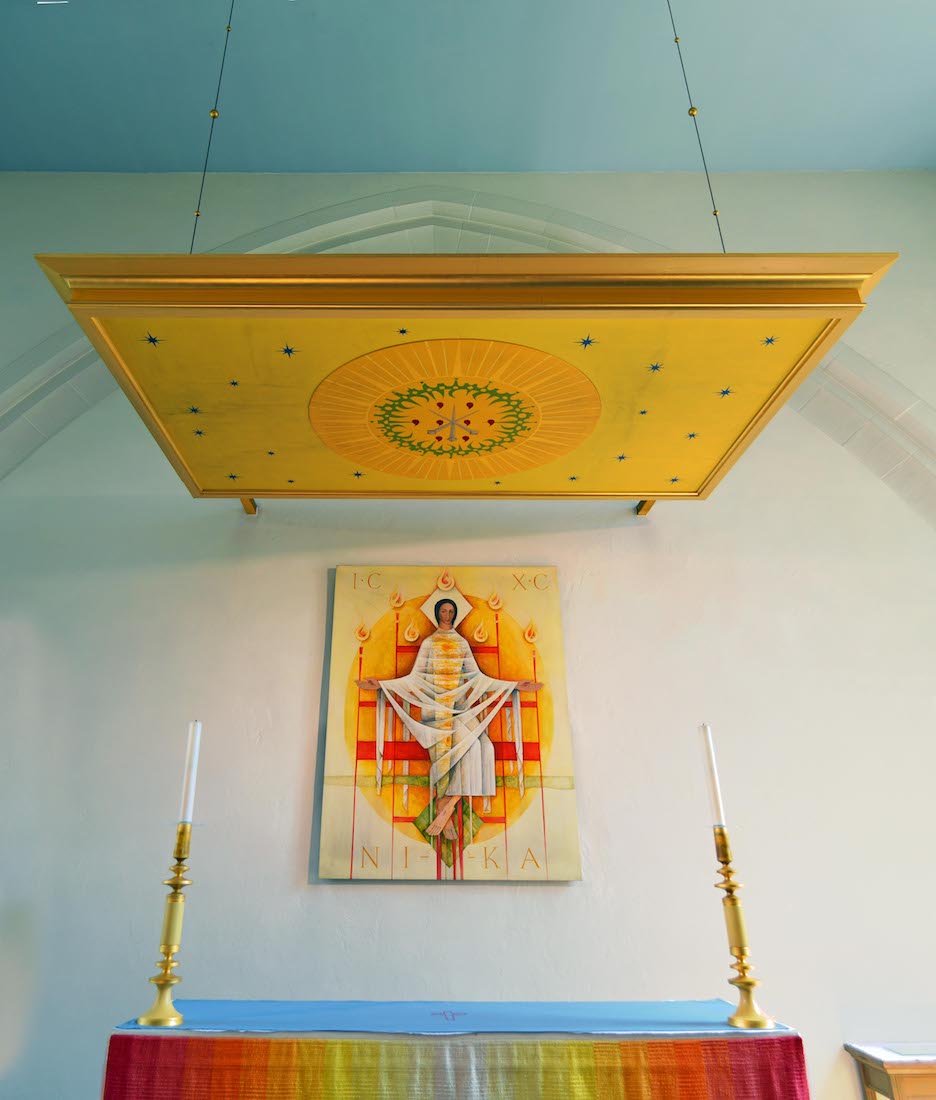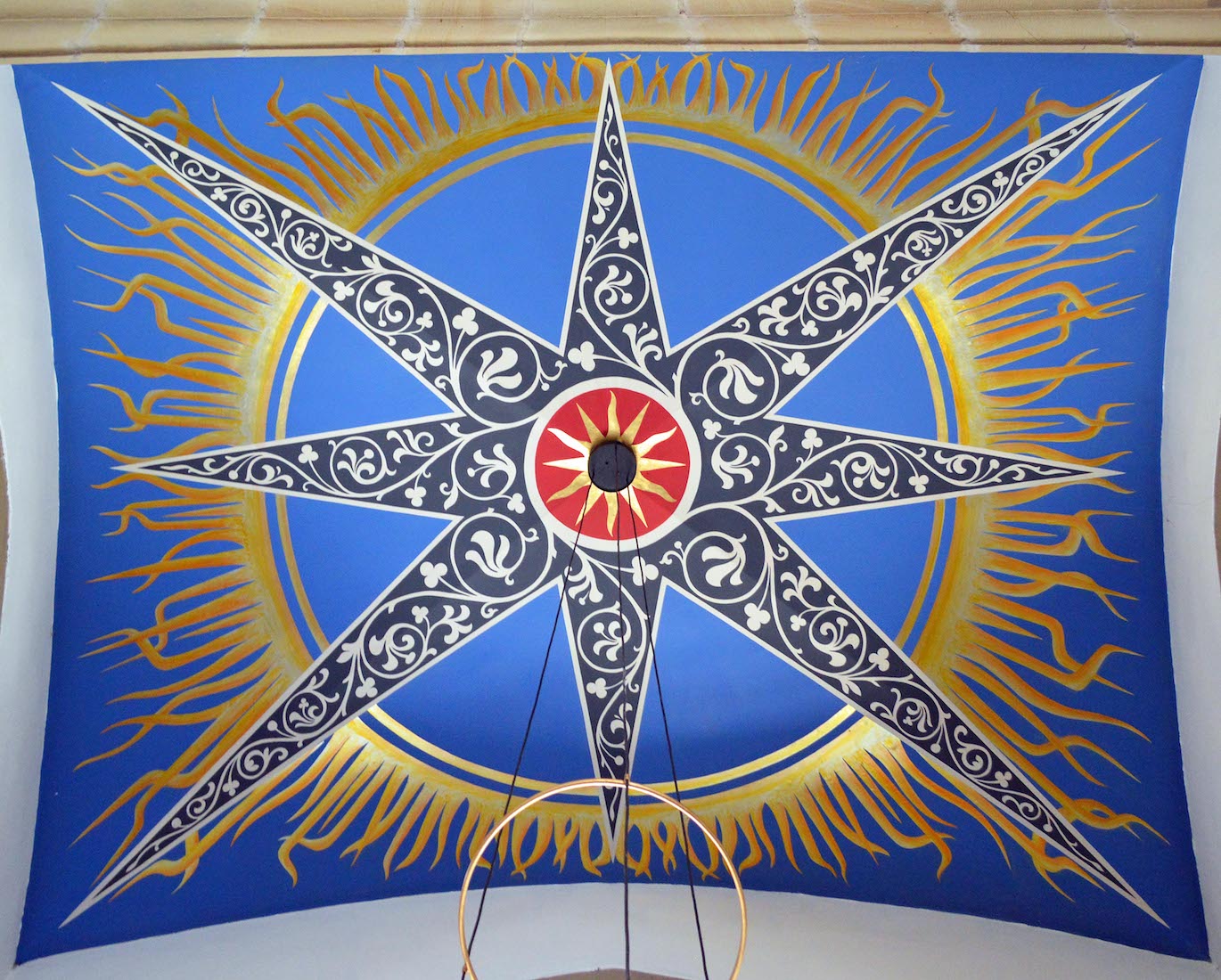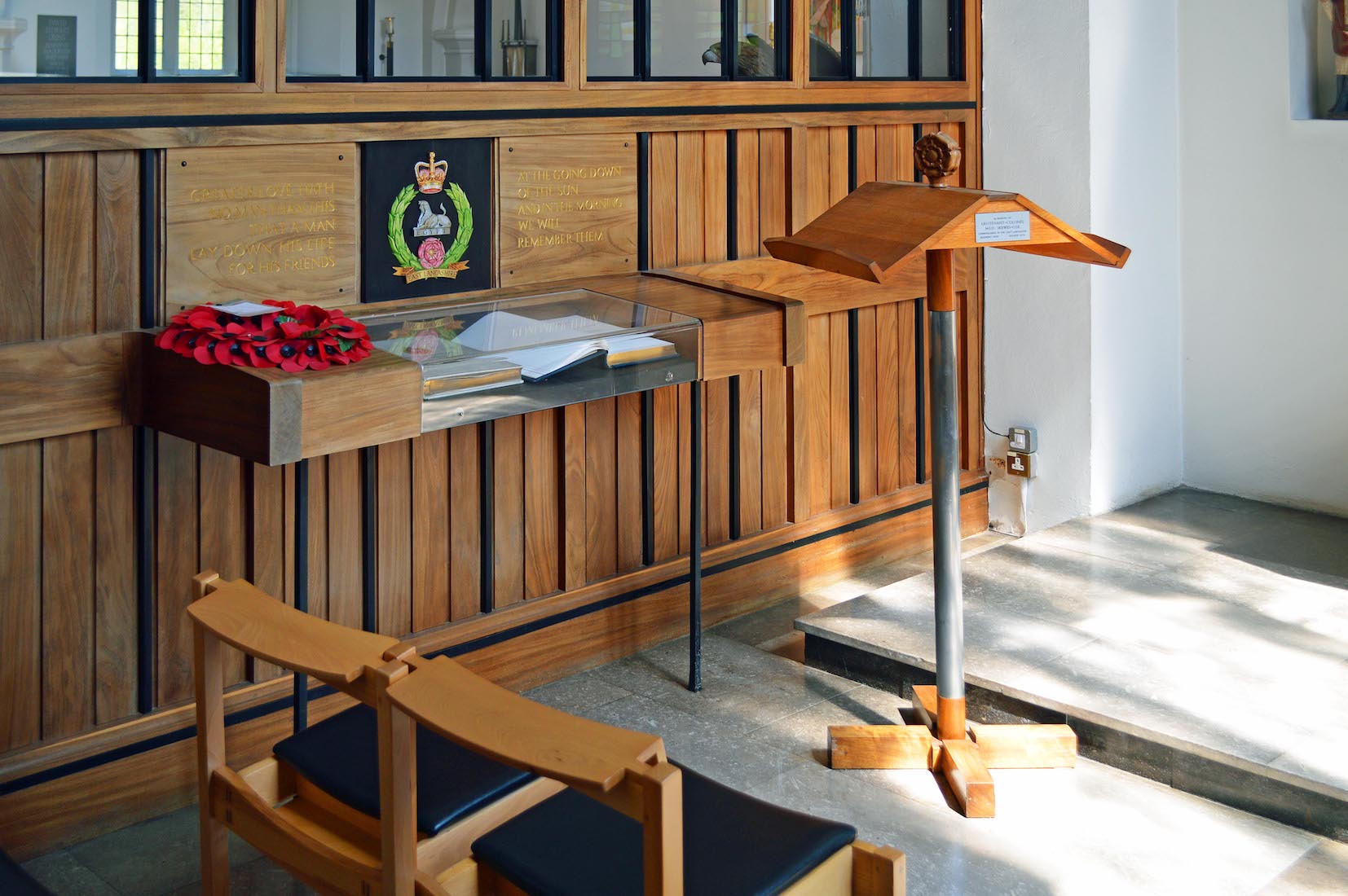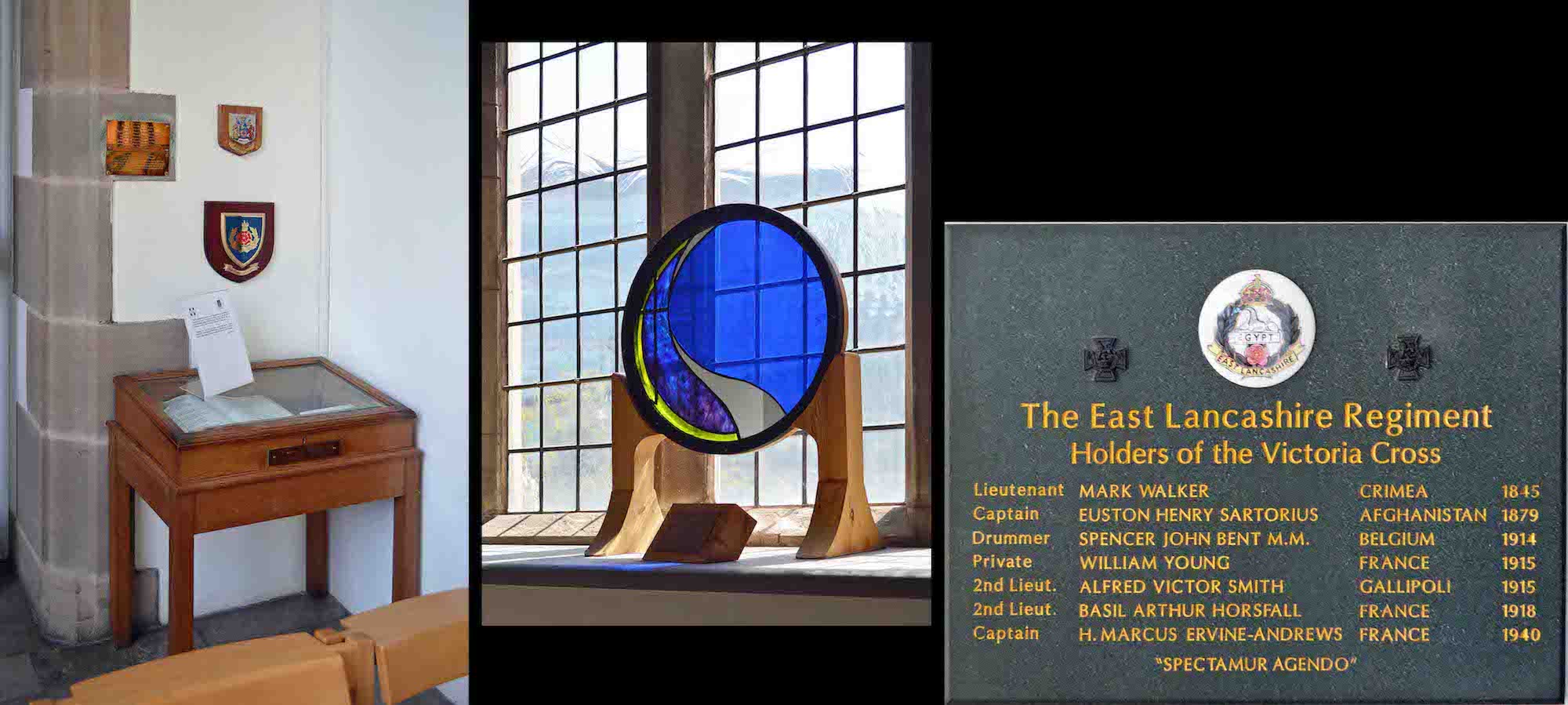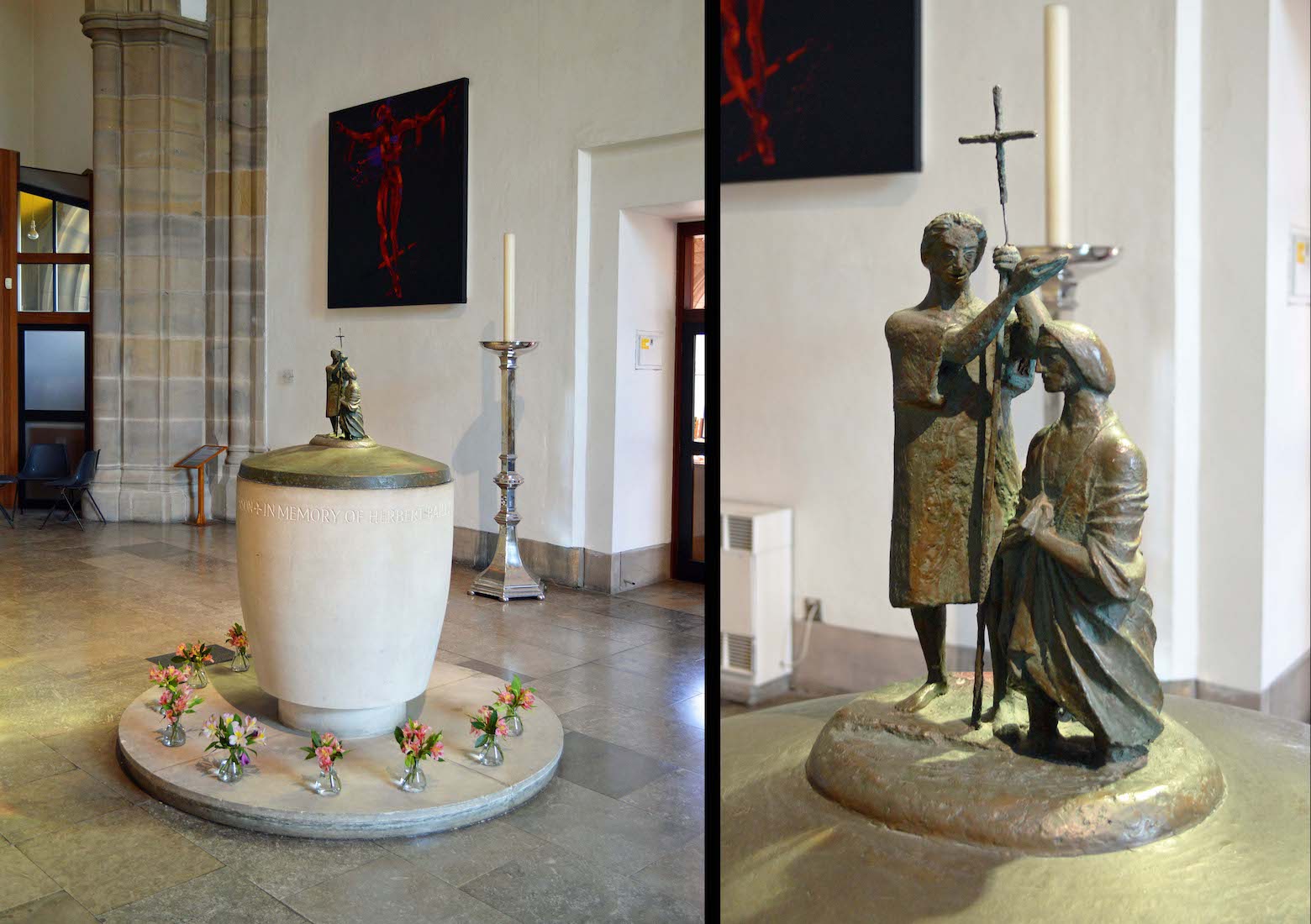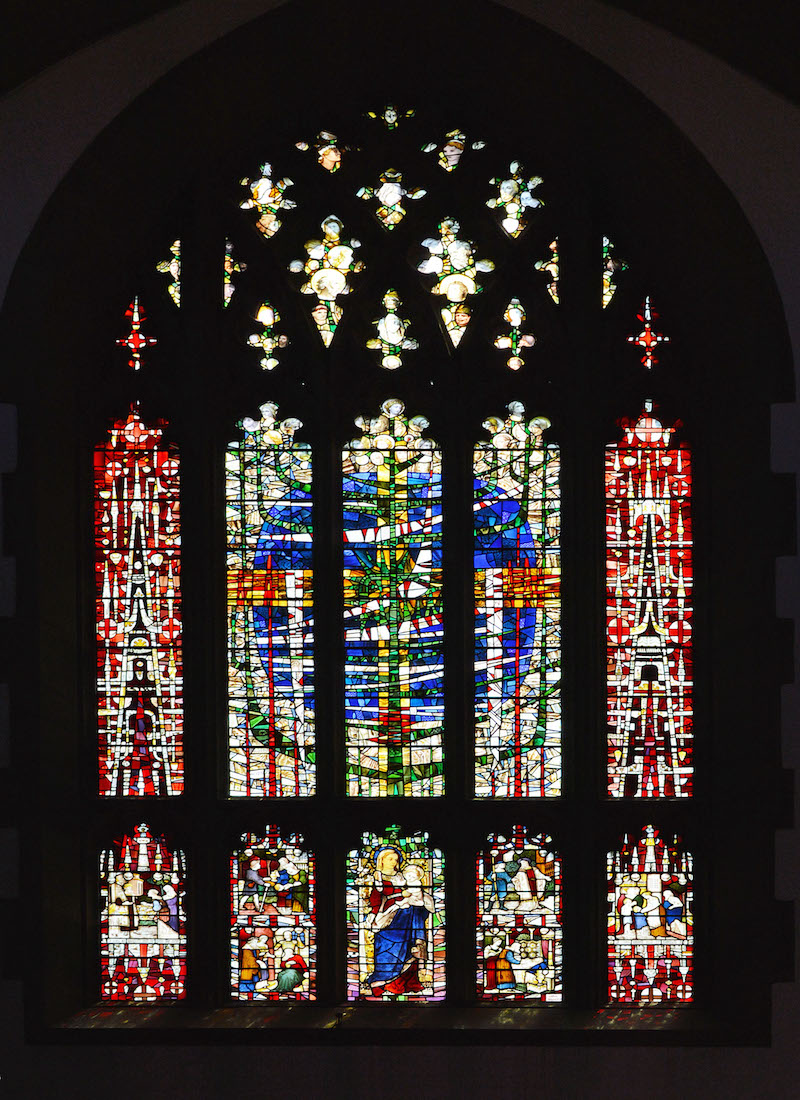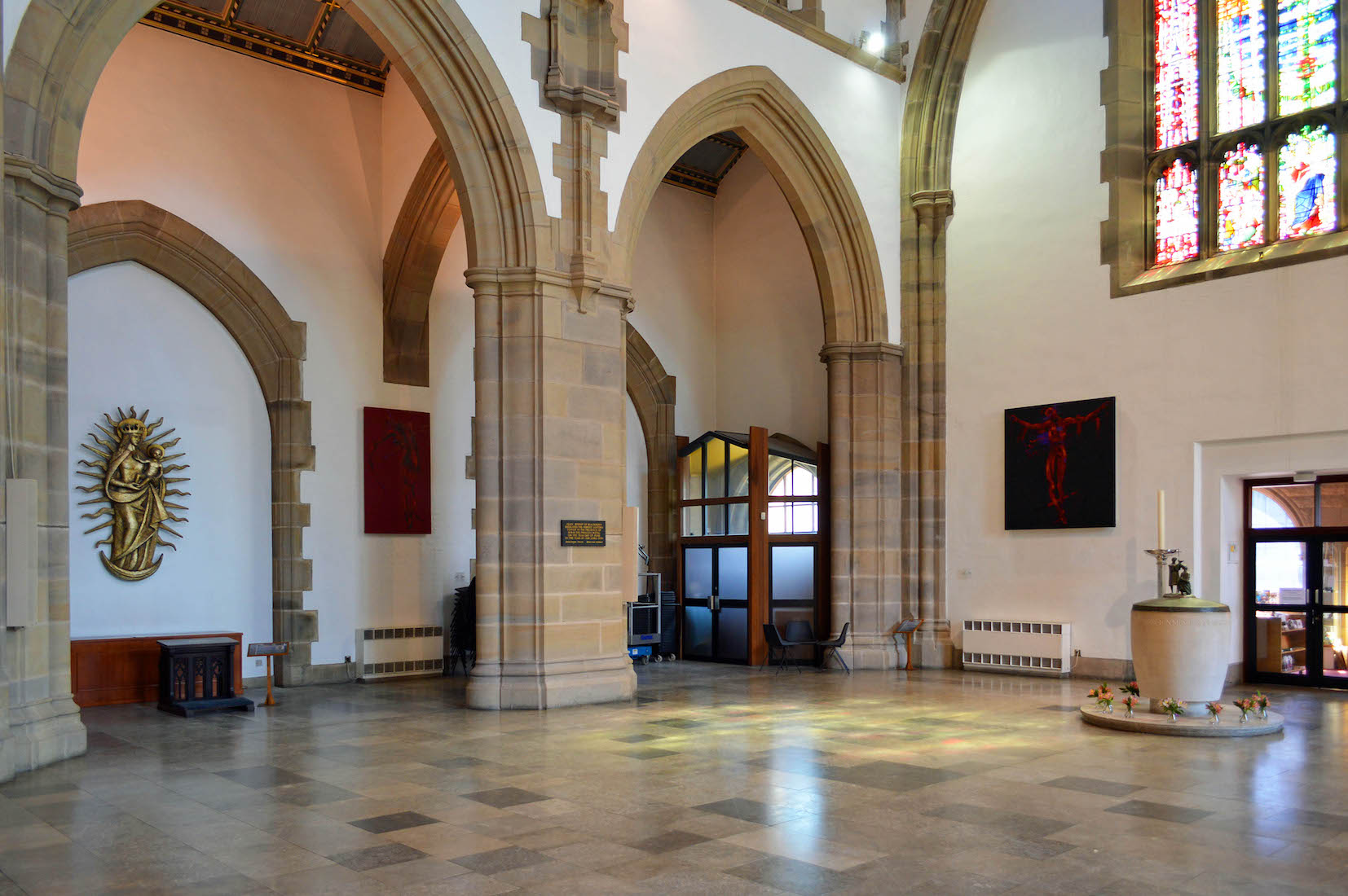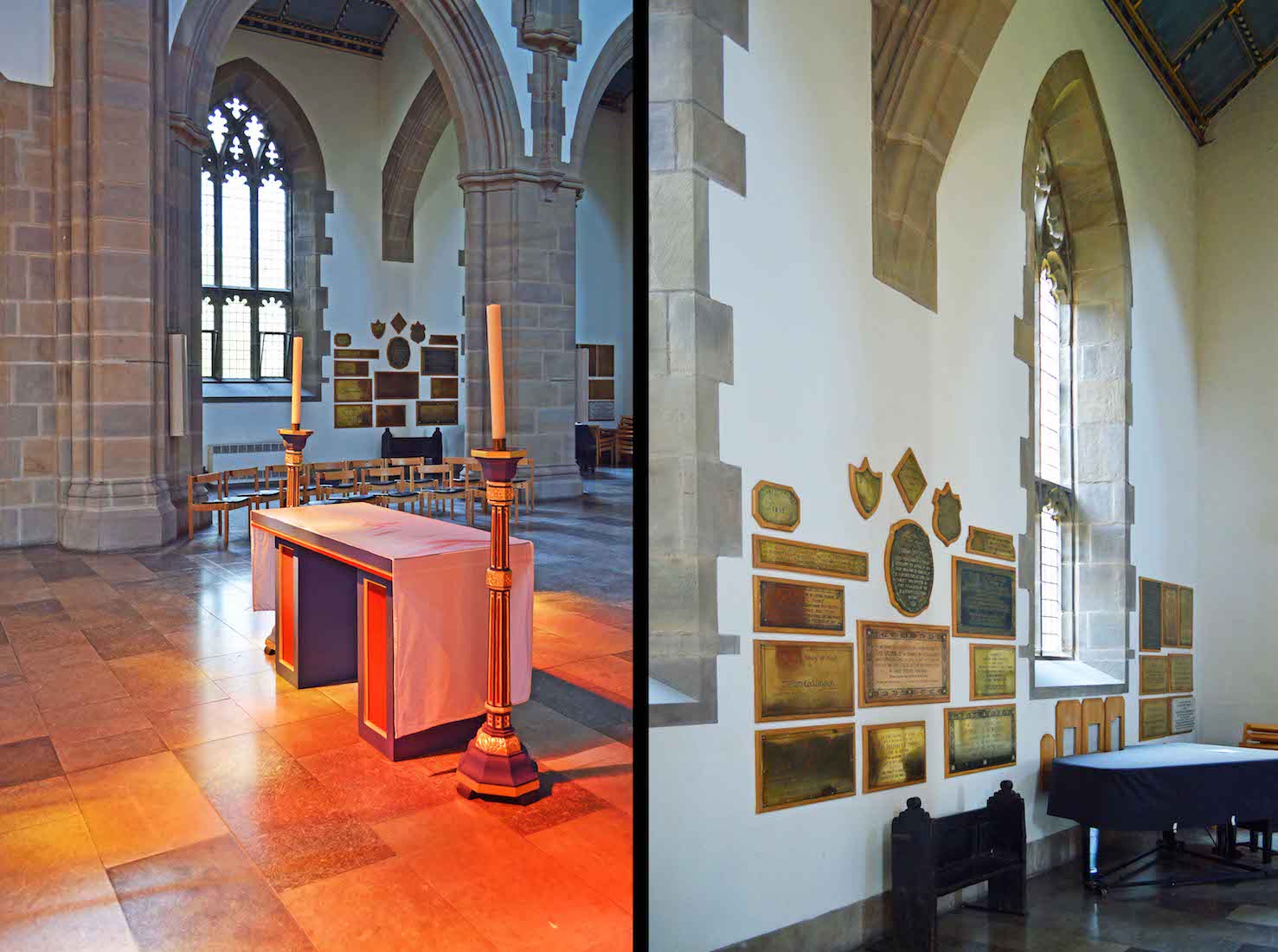
Each of the transepts has an East and West aisle. Changing our position a little on the crossing, we see there are many plaques on the West wall of the North transept. These plaques are of historical interest, and were moved here from the old church when the extensions took place. PLAN
42. WHITTAKER PLAQUE
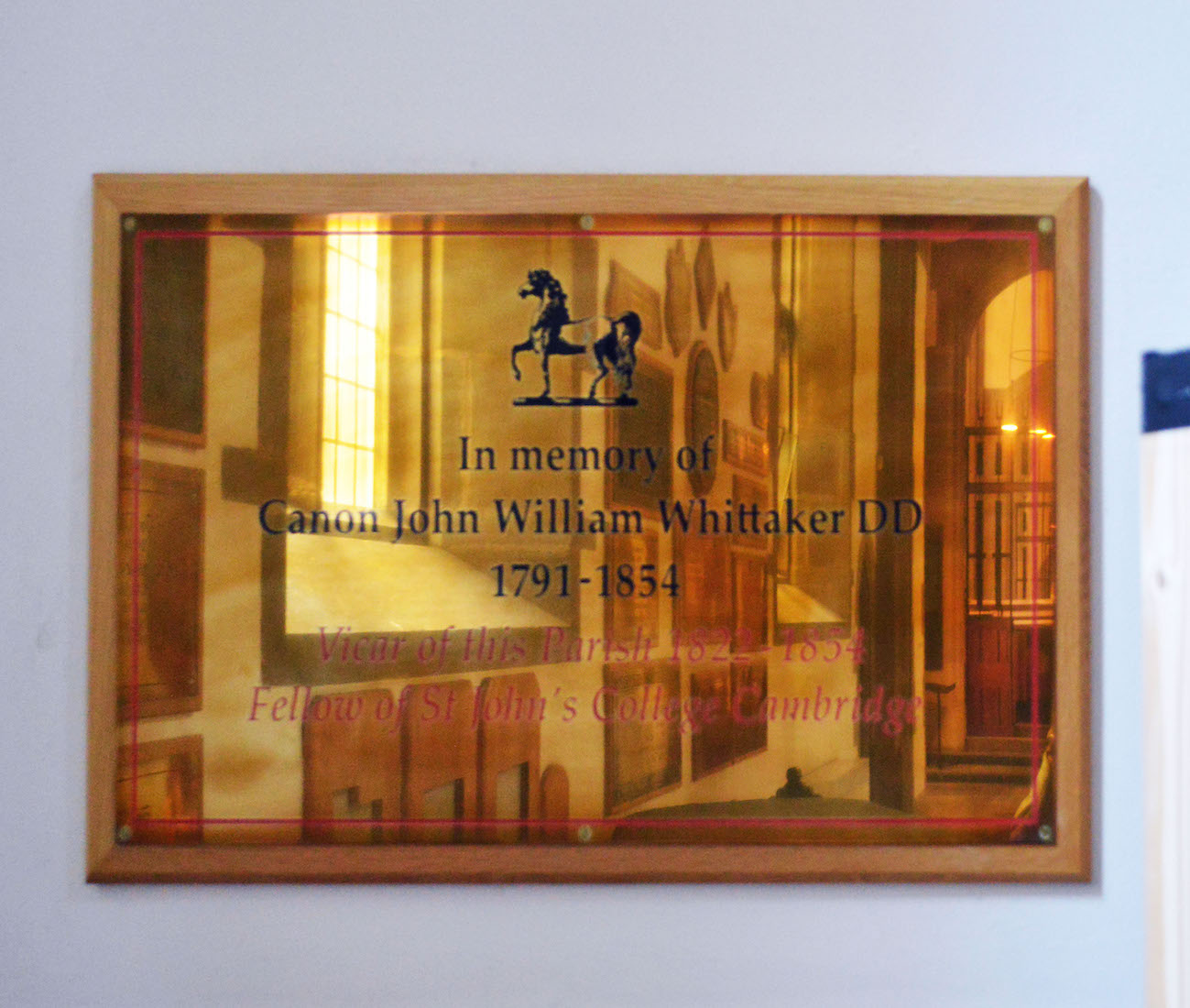
This shiny brass plaque on the North wall is in memory of Canon John William Whittaker DD, 1791 – 1854, who was Vicar of this parish from 1822 – 1854. When Whittaker arrived in Blackburn, Anglicanism was in a poor state. There were only three churches in the town, and these were poorly attended. Whittaker embarked on a programme of church building. He also developed education in the town by creating Sunday Schools, and became involved in local politics. During the time that Whittaker was Vicar of Blackburn, the parish church was rebuilt, and twelve new churches were built in and around the town.
43. OLD CATHEDRA
The medieval-style chair beneath the transept window is the original cathedra. It bears the arms of the Blackburn, Manchester, Chester and Lichfield dioceses (these representing the lineage of the present diocese), and the arms of the two provinces of the Church of England, York and Canterbury. It is surmounted by another symbol of the Cross, the pelican, which according to legend, pecks her breast to feed her young on her blood.
44. MISERICORDS
The old cathedra is flanked by eight misericords, seats for monks, belonging to a set originally in Whalley Abbey. Pictured here are Adam and Eve and the tree of life at left, and an angel at right. Other images include a lion, a winged bull, and a fox preaching to geese. [Left photo credit: John Tustin, Creative Commons Licence]
45. NORTH TRANSEPT WINDOW
This window is part of what was the East window (1849) of the pre-1926 parish church. Vicar John Whittaker bought the window from a convent in Belgium. It originally depicted the Sacred Heart of Jesus surrounded by the Four Evangelists. Whittaker had the heart painted out and a lamp substituted. The right hand, originally held aloft in blessing was turned to hold the lamp. The left hand points to the lamp. The theme of the window is now ‘I am the Light of the world’.
46. HISTORICAL DISPLAY
These illustrated posters give an interesting short history of Blackburn Cathedral from 1826 to the year 2000. The adjacent plaque is one of a number of memorial plaques on Cathedral walls. This one is in memory of Robert (Martineau), Bishop of Blackburn, who consecrated the Cathedral in the presence of HRH The Princess Alexandra on the 18th day of November in the year of our Lord 1977.
47. NORTHERN AMBULATORY
Leaving the North transept we enter the Northern ambulatory. To our left is the sculpture Virgin and Child by Josefina Vasconcellos (1904 – 2005). This is made of terrossa and is in memory of Mothers’ Union worker Helen Dix. At the expressive human level, a mother washes her child, but hints of the divine are also included. Behind us and near the organ is this list of Cathedral organists from 1926 to 2011.
48. TO THE JESUS CHAPEL
We follow up the North ambulatory to where the steps descend to the undercroft, and turn to enter the Jesus Chapel. Looking North across the stairs is this vivid window by the famous pre-Raphaelite artist Sir Edward Burne-Jones (1833 – 1898). The window vividly shows the preachers Enoch, Paul and Elijah, and is one of the very few to survive the elevation of parish church to cathedral and the subsequent removal of the stained glass from the nave.
49. JESUS CHAPEL
We turn to look into the Jesus Chapel. Normally one might expect a Lady Chapel here, but the dedication of the Cathedral to St Mary the Virgin makes this redundant. At centre we see the altar with its sounding board or tester above, and on the wall John Haywood’s Resurrection icon. At left is an aumbry, and closer, at extreme left, an African Madonna. At extreme right is an eagle lectern. This chapel is one of the most used areas of the Cathedral.
50. CHAPEL ITEMS
The African Madonna is a recent addition to the Jesus Chapel – the gift of the Cathedral Church of St Andrew and St Michael in Bloemfontein, South Africa. The Blessed Sacrament is reserved in the aumbry (centre), designed by John Hayward. At right is shown the traditional eagle lectern, although in this case made of wood. From here the Scripture is read.
51. ALTAR AND ICON
The icon of the Resurrection shows a gentle-faced, almost feminine, Christ emerging from the bands of cloth that bound him in the grave. The tongues of flame remind us that Pentecost is not far away. The icon bears the letters IC XC NIKA (Jesus Christ conquers). The altar frontal by York artist Jacqueline James reflects the icon’s colours. The tester above depicts the nails of the Cross.
52. ST MARTIN’S CHAPEL
Adjacent to the Jesus Chapel is St Martin’s Chapel. This is dedicated to St Martin of Tours, and is the chapel of the East Lancashire Regiment (now the Queen’s Lancashire Regiment). The window (1970) by John Hayward is abstract and uses the greens and yellows of military camouflage. The simple stone altar was the gift of A. E. Aspinall in memory of his brother who was killed in WWI.
53. CHAPEL CEILING
The arms of the city of Tours are found in the ceiling, together with the heraldic device known as an escabuncle – the leather straps found at the back of a Roman soldier’s shield. The Greek letters alpha and omega also appear – Christ, the beginning and the end.
54. NORTH WALL OF CHAPEL
Against the North wall of the chapel is a book containing the names of all those in the regiment who lost their lives in WWII. Above are suspended the Sovereign’s and Regimental colours of the first and second battalions of the Regiment, while at the entrance to the chapel are found the Sovereign’s and Regimental colours of the fourth battalion of the Regiment.
55. SOUTH WALL OF THE CHAPEL
The blue lens is entitled ‘Looking for Peace’ and is dedicated to all the asylum seekers and refugees in Blackburn. To the right is a list of the seven Victoria Cross holders who were also members of the East Lancashire Regiment.
56. SOUTH TRANSEPT
Leaving the chapels, we now move back to the South transept. Again we have a single facing window, the red decorated ceiling, and an aisle on either side. As well, there are further paintings of ‘The Journey’. But also here below the window is the baptismal font, and we notice that the clerestory windows do not have clear glass.
57. FONT
The font is shaped like an egg to emphasise that although we are baptised into the death of Christ, in Christ we enjoy the power of a new resurrected life. The font is surmounted by a small sculpture of Christ being baptised by John the Baptist. The font is placed here because originally this transept was intended to serve as the main entrance to the Cathedral.
58. SOUTH TRANSEPT WINDOW
This window (1967) was also designed by John Hayward, and incorporates in abstract form glass that was taken from the thirty windows which were taken out of the parish church when the building was extended for use as a cathedral. Central is a tree of life set against a Cross. We might also see the crown of thorns, the anchor of faith, the Virgin and Child near the base, and the faces of the saints at top. On the sides are depicted great pillars of the Spirit’s fire.
59. TRANSEPT CLERESTORY WINDOWS
The four clerestory windows of the transept each depict a Biblical figure. From left we see (East wall): Moses with the tablets of the law, Abraham with God’s promise on a scroll, and (West wall): King David playing his lyre, and Elijah.
60. EAST CORNER OF THE SOUTH TRANSEPT
In this view we see a golden figure on the wall at left, a plaque on the central column, and the baptismal font at right. Two of Penny Warden’s paintings are also visible. Just out of view on the left is a colourful crest.


